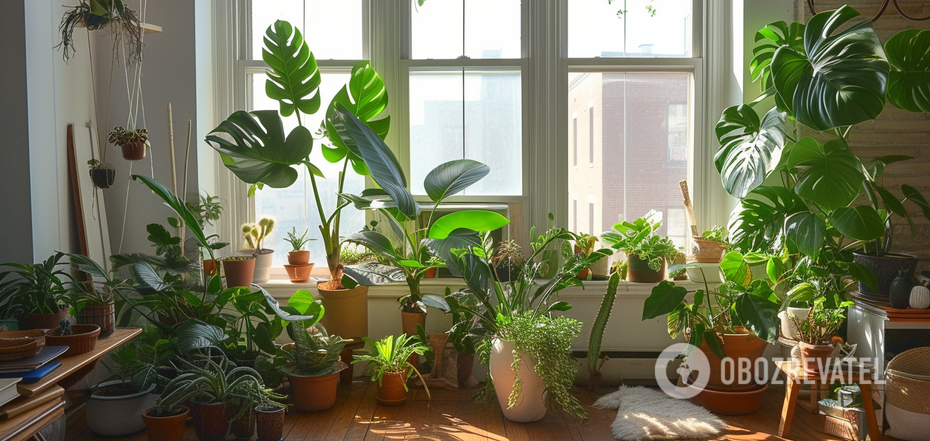Life
How to properly care for indoor plants: seven rules that will make all the difference
An indoor garden, even a small one with just a few compact plants, brings many benefits. Greenery purifies the air in your home, is pleasing to the eye, and, according to psychologists, helps relieve stress. Taking care of flowerpots is also a good hobby that helps you relax and cheers you up.
But it brings real pleasure only when the plants feel good and grow well. And to do this, you need to avoid mistakes in caring for them as much as possible. OBOZ.UA tells how to achieve this.
Make the right choice
Plants should be proportionate to the room. It is hardly worth putting a monster in a small room that grows gigantic, and one violet will be lost in a spacious hall. In addition, if you don't have the skills to resuscitate flowers, buy only those flowerpots that look good - strong leaves without signs of damage, healthy stems, lush flowers.
Water on time
For watering, it is advised to use soft water at room temperature. But our taps usually have hard water, so how do we soften it? The easiest way is to let it stand for a few days and water only the top layers. You can also filter the water. And collect rainwater.
To check if a plant needs watering, touch the soil in the pot. For decorative foliage and flowering plants, it should not dry out more than 1.5 cm, while succulents can stand without watering for longer. Also remember: the larger the flowerpot, the more water accumulates in the ground, so such containers must have a drainage hole.
Also, keep in mind the main rule of watering frequency: the longer the day and the higher the temperature, the more frequent watering should be. And vice versa: in cool weather and in the dark half of the year, you should try not to overwater the flowers. These signs also work one by one. For example, if the radiators in the house work very intensively in winter, you should water a little more often, because the heat from them dries out the soil. And in cool and rainy summer weather, you should reduce the frequency of watering the plants.
Take care of proper lighting
Most indoor plants do not like direct sunlight and prefer plenty of indirect sunlight. In such conditions, when there is a lot of light, but it does not burn the leaves, almost all flowerpots will feel great. But in any case, when buying a flower, read about its specific requirements and be guided by them.
Check the air quality
Usually, the same room temperature as for people is quite comfortable for indoor plants. Even a slight chill in winter. But try to keep the pots away from drafts and do not place them under air conditioning.
What you have to watch out for is humidity. Foliage and flower pots mostly come from tropical regions and like humidity. You can provide it by purchasing a special device, or you can regularly spray the flower or place a tray of water near it, which will evaporate and create the necessary moisture in the air.
Watch out for diseases and pests
Indoor plants suffer from diseases and pests just like outdoor plants. Regularly inspect your garden for suspicious spots, small insects, and plaque on the leaves and soil. Slowed growth, shedding of buds and leaves are also alarming symptoms and a reason to take a good look at the flower and the pot it lives in. If you notice any suspicious signs, quarantine the sick plant immediately - leave it alone. Determine the type of pest or pathogen and treat the plant with appropriate drugs. As a rule, if you notice the problem in time, it can be successfully and completely solved.
Repot properly
You should not disturb the plant by repotting too often. Focus here on the size of the crown. If it significantly exceeds the diameter of the pot, it's time to "move" to a more spacious vessel. Small plants should be transplanted every 2-3 years, large plants - less often. Before the procedure, wait for the soil under the flower to dry out, take it out together with a lump of old soil and do not shake it off too much, unless the roots need additional care and treatment. Once the flower is in its new pot, add fresh soil to the sides until it is firmly in place. Then water it. Of course, disinfect the pots and all the tools you'll be using before you start.
Feed according to the season
Since houseplants live in a limited amount of soil, it needs to be regularly enriched with nutrients. To do this, purchase a fertilizer suitable for the species and apply it according to the instructions. In spring and summer, you need to give food regularly, in winter, you need to stop feeding or carry out it sporadically.
Subscribe to OBOZ.UA channels in Telegram and Viber to keep up with the latest events.



























